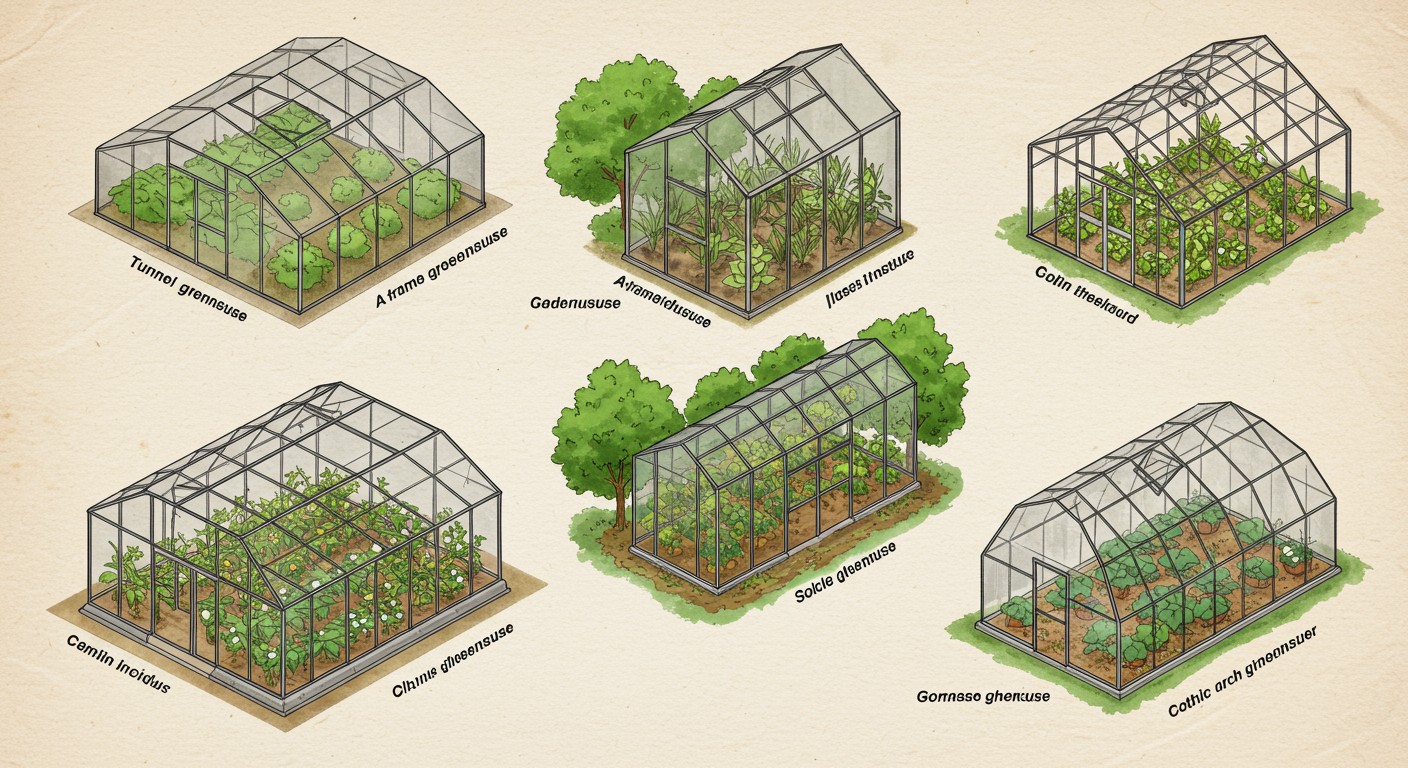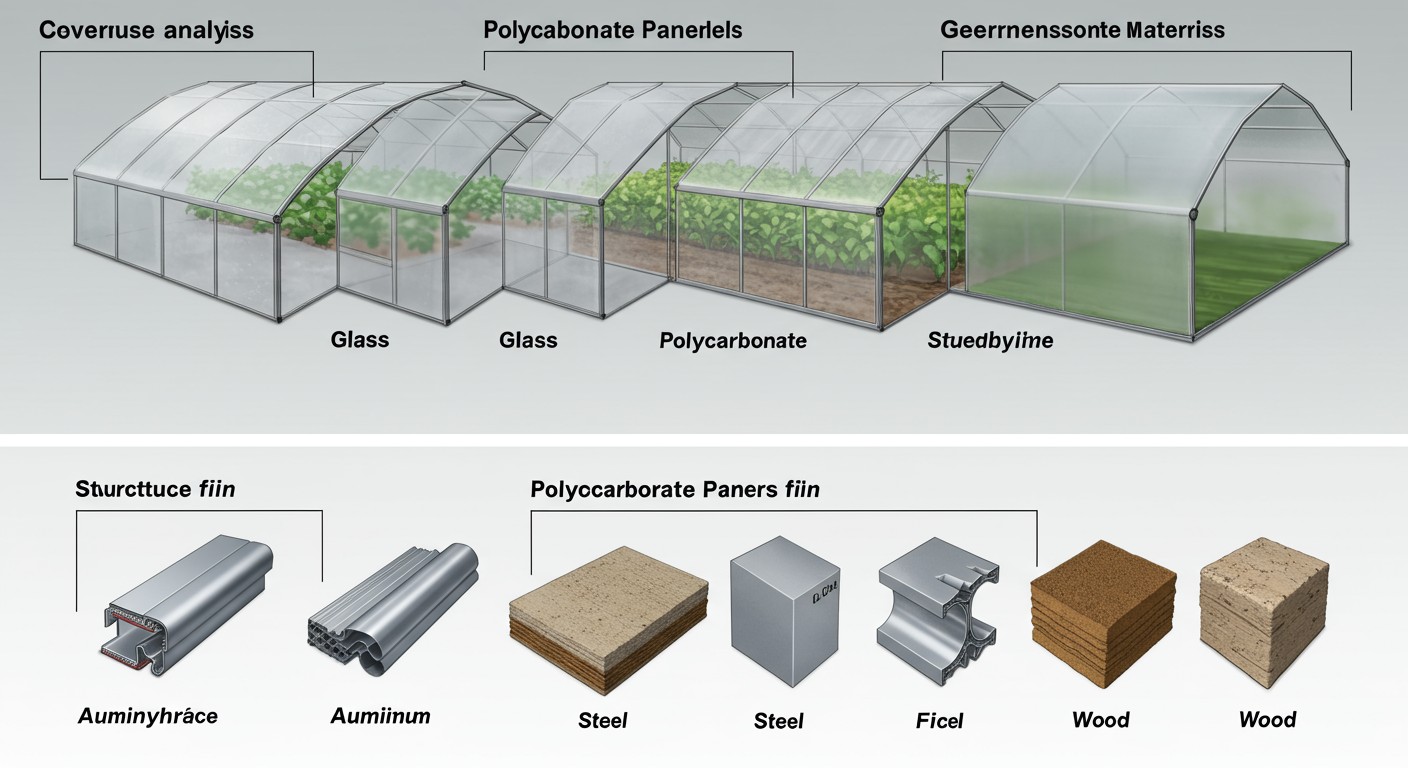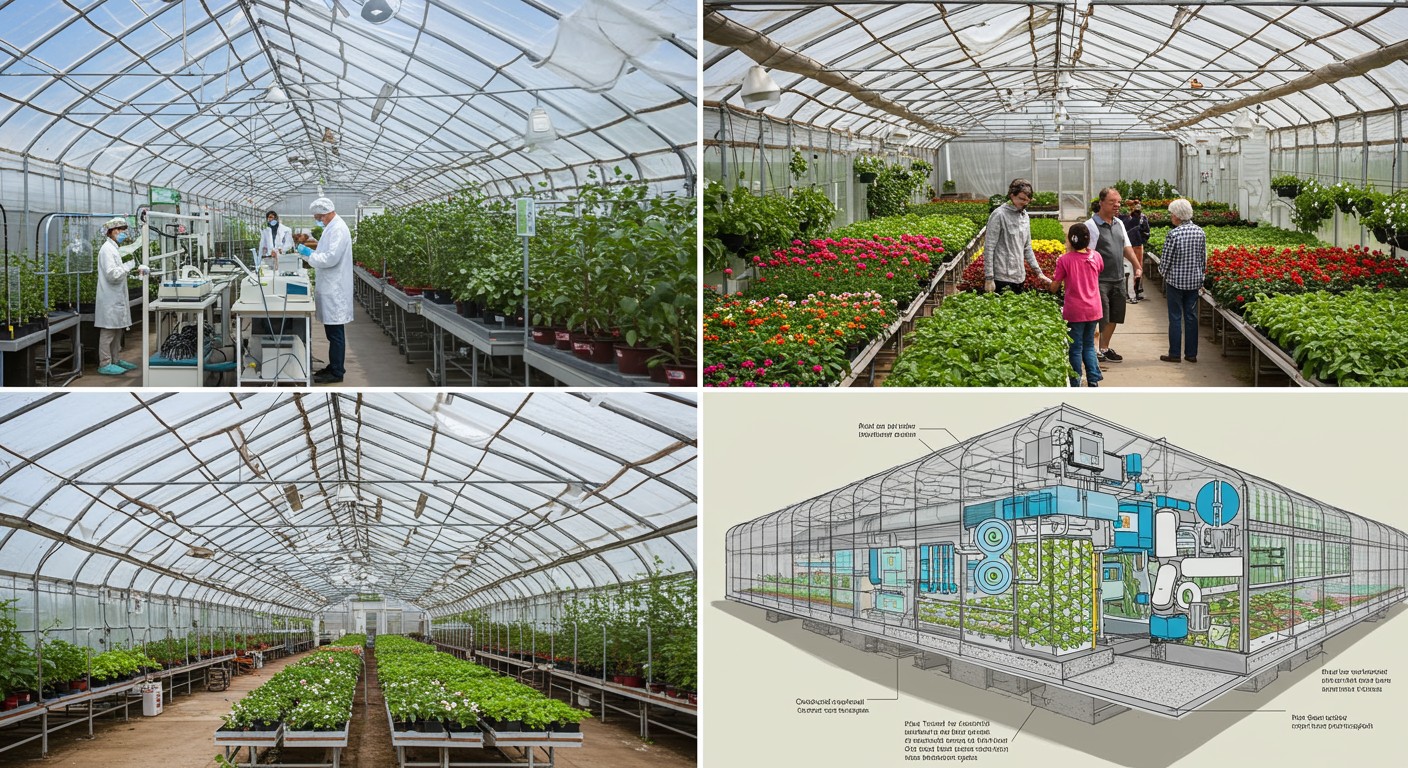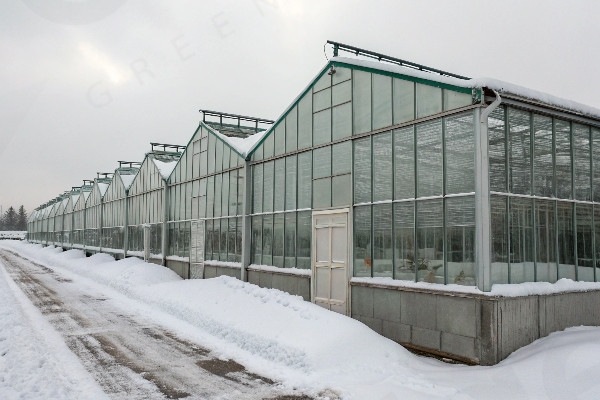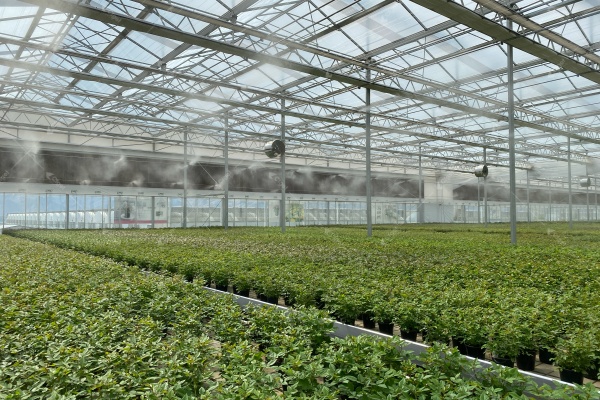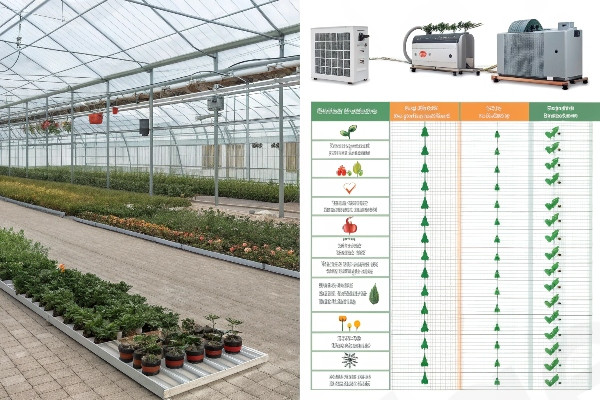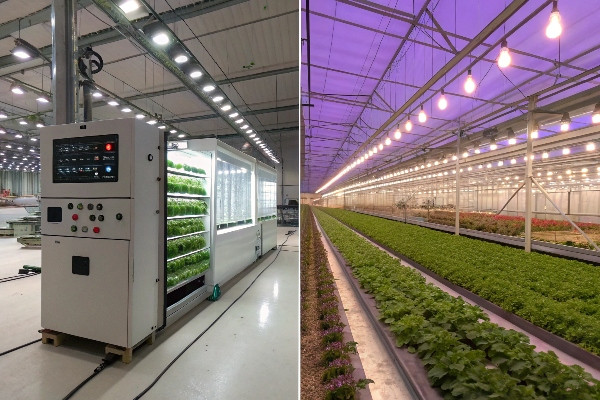When planning a greenhouse project, choosing the right structure can be overwhelming. With so many designs, materials, and specialized options available, it’s easy to feel lost in technical details and industry jargon. The wrong choice could lead to wasted investment, poor crop performance, or high maintenance costs.
A greenhouse is more than just a sheltered growing space—it’s a controlled environment that protects crops from adverse weather while creating optimal growing conditions. By selecting the appropriate greenhouse design, materials, and systems, you can create a customized space that meets your specific needs, whether for commercial production, research, retail operations, or specialized crop cultivation.
Greenhouses have evolved significantly over the years, from simple structures to sophisticated climate-controlled environments. Modern greenhouse systems can regulate temperature, light, humidity, and provide irrigation, fertilization, and gas enrichment to maximize plant growth. Understanding the fundamental differences between greenhouse types is crucial for making an informed decision that aligns with your goals and resources.
Freestanding vs. Lean-To: Which Greenhouse Design is Best?
The layout and positioning of your greenhouse significantly impact its functionality, efficiency, and integration with existing structures. Two primary configurations—freestanding and lean-to—offer distinct advantages depending on your specific requirements and constraints.
Freestanding greenhouses provide maximum growing space, better light exposure from all directions, and more flexibility in positioning and expansion. Lean-to greenhouses are more economical to heat, offer convenient access from the attached building, and utilize existing wall support but have limited growing space and directional light exposure.
Freestanding Greenhouse Advantages
Freestanding greenhouses stand independently from other structures, allowing for maximum versatility in design and placement. According to Texas A&M’s Aggie Horticulture department, freestanding structures are the most common type for commercial production.
The key advantages include:
- Complete control over positioning for optimal sun exposure
- Maximum growing space with accessible planting areas on all sides
- Better ventilation options with multiple sides for air exchange
- Easier expansion possibilities as your needs grow
- Reduced risk of disease spread compared to connected structures
One commercial grower in Florida shared: "After switching from a lean-to to a freestanding Quonset greenhouse, we increased our production capacity by 35% due to better light distribution and temperature control. The additional initial investment paid for itself within two growing seasons."
Lean-To Greenhouse Benefits
Lean-to greenhouses are attached to an existing structure along one side, making them an excellent solution for locations with limited space or for operations looking to minimize costs.
Their main benefits include:
- Lower construction costs by utilizing an existing wall
- Improved energy efficiency through shared heating with the main building
- Easy access from the attached structure
- Protection from extreme weather on one side
- Ideal for home gardeners or small-scale operations
A garden center owner in Washington state noted: "Our lean-to retail display greenhouse connects directly to our main shop, making it convenient for customers and staff. It uses about 40% less heating than our freestanding production houses during winter months because it borrows heat from the building."
Making the Right Choice
When deciding between freestanding and lean-to designs, consider these factors:
- Available space and orientation
- Budget constraints
- Growing goals and plant types
- Climate considerations
- Future expansion plans
- Labor and accessibility requirements
For commercial growers and research facilities, freestanding structures generally offer better long-term value and flexibility. For hobbyists, educational displays, or retail settings where customer flow is important, lean-to designs may provide better integration with existing facilities.
Common Greenhouse Shapes: Tunnel, A-Frame, Gothic Arch, and More
Beyond the basic configuration of freestanding versus lean-to, greenhouse shapes dramatically influence light transmission, structural strength, space utilization, and climate control capabilities. Each design offers unique advantages for different applications and environmental conditions.
The most common greenhouse shapes include Quonset (tunnel), A-frame, Gothic arch, dome, and sawtooth designs. Quonset structures offer economical construction and good wind resistance but limited headroom. A-frames provide excellent precipitation shedding and interior height but have more complex construction. Gothic arches combine the benefits of both while dome designs offer superior wind resistance and light distribution.
Quonset (Tunnel) Design
The Quonset or tunnel greenhouse features a semicircular roof formed by curved rafters, creating a structure resembling a half-cylinder. According to Oklahoma State University Extension, this design is one of the most popular for commercial production.
Key characteristics include:
- Simple, economical construction
- Excellent wind resistance due to aerodynamic shape
- Good light transmission throughout the day
- Easy covering with flexible materials like polyethylene
- Less interior space near the sides, limiting growing area
A vegetable grower from Michigan commented: "We operate six 30′ x 96′ Quonset houses for year-round production. The curved design helps shed snow loads in winter, and we’ve weathered several severe storms without structural damage. The main drawback is working near the edges where headroom is limited."
A-Frame Structures
A-frame greenhouses feature steeply pitched roofs meeting at a central ridge, resembling a traditional house shape. This classic design offers several important benefits:
- Excellent snow and rain shedding capabilities
- Maximum headroom in the center
- Simple to construct with standard building materials
- Good for regions with heavy precipitation
- Compatible with rigid covering materials like glass or polycarbonate
"Our A-frame educational greenhouse at the botanical garden has withstood 15 years of heavy snowfalls," reports a facility manager in Colorado. "The steep pitch prevents snow accumulation, and the tall center space allows us to grow specimen palms and tropical trees that wouldn’t fit in other designs."
Gothic Arch Design
The Gothic arch greenhouse combines elements of both Quonset and A-frame designs, featuring curved rafters that meet at a peak. This creates a pointed arch shape that offers several advantages:
- Superior structural strength compared to Quonset designs
- Better snow shedding than rounded structures
- More usable growing space near the sidewalls
- Aesthetically pleasing appearance
- Good light transmission throughout the structure
A commercial flower grower in Pennsylvania noted: "After comparing multiple designs, we chose Gothic arch structures for our expansion. They provide nearly 20% more usable growing space than our older Quonset houses because we can work comfortably closer to the sides. The peaked design also handles our winter snow loads much better."
Other Specialized Shapes
Several other greenhouse shapes serve specific purposes:
- Dome greenhouses: Offer maximum structural strength and excellent light distribution but are complex to construct
- Sawtooth designs: Feature uneven roof sections that improve natural ventilation and northern light exposure
- Ridge-and-furrow (gutter-connected): Connect multiple greenhouses side by side, maximizing space efficiency for large operations
- Vertical farms: Utilize multiple growing levels to maximize production in limited footprints
Climate Considerations for Shape Selection
The ideal greenhouse shape varies significantly based on local climate conditions:
- High snowfall areas benefit from steep-pitched designs like A-frame or Gothic arch
- Windy locations are better suited for aerodynamic shapes like Quonset or dome
- Areas with limited winter light benefit from designs maximizing southern exposure
- Hot climates may require shapes that facilitate better ventilation and cooling
Material Choices Deep Dive: Pros and Cons for Structure & Covering
The materials used in greenhouse construction significantly impact durability, light transmission, heat retention, maintenance requirements, and overall cost. Selecting appropriate structural and covering materials is one of the most crucial decisions in greenhouse planning.
Structural materials commonly include aluminum, steel, and wood, with aluminum offering the best longevity and light reflectance. For coverings, options range from glass (highest light transmission, longest lifespan) to polycarbonate (excellent insulation, high durability) to polyethylene film (economical, requires frequent replacement). Each material combination presents unique tradeoffs between initial cost, operational efficiency, and long-term maintenance.
Structural Materials
The framing system provides the greenhouse’s backbone and must withstand environmental stresses while supporting the covering material. According to Oklahoma State University Extension, three primary structural materials dominate the market:
Aluminum Framing
- Pros: Longest lifespan, maintenance-free, lightweight, reflects light to plants, won’t rust or rot
- Cons: Higher initial cost, less strength than steel (requires more structural members)
- Best for: Long-term commercial installations, structures with glass covering, precision-engineered greenhouse systems
"Our 25-year-old aluminum greenhouse frames show virtually no deterioration despite constant humidity and temperature fluctuations," reports a research facility manager. "The reflective properties of aluminum have also noticeably improved growth along the edges compared to our older steel structures."
Steel Framing
- Pros: Strong, spans wider distances with fewer supports, moderate cost
- Cons: Requires galvanization or paint to prevent corrosion, heavier than aluminum
- Best for: Wide-span structures, areas with high wind or snow loads, budget-conscious commercial operations
A commercial tomato producer from Arizona shared: "We chose galvanized steel for our 30-foot wide greenhouse spans because it allowed us to maximize growing space with fewer internal supports. After seven years, we’ve had to treat some spot rust, but overall the structure has performed exceptionally well in our desert conditions."
Wood Framing
- Pros: Low initial cost, easy to work with using basic tools, good insulation properties
- Cons: Shortest lifespan, requires regular maintenance, can harbor pests and diseases
- Best for: Hobby greenhouses, temporary structures, educational projects, rustic designs
"Our wooden greenhouse has required treatment every two years to prevent rot in our humid climate," notes a community garden coordinator. "While it was affordable to build, the maintenance has made it more expensive over time than if we’d invested in aluminum initially."
Covering Materials
The greenhouse covering is critical for light transmission, heat retention, and plant protection. Each material offers different performance characteristics:
Glass Coverings
- Pros: Highest light transmission (90-95%), longest lifespan (30+ years), aesthetic appeal, won’t yellow over time
- Cons: Most expensive option, heaviest (requires substantial framing), fragile, limited insulation unless double-paned
- Best for: Permanent installations, retail displays, ornamental structures, research facilities
"Our glass-covered retail greenhouse creates an inviting shopping environment and has maintained excellent clarity for over 12 years," says a garden center owner. "While the initial investment was significant, the longevity and low maintenance have justified the cost."
Polycarbonate Panels
- Pros: Excellent insulation (especially twin or triple-wall), high impact resistance, good light diffusion, long lifespan (10-15 years)
- Cons: Moderate light transmission reduction (80-90%), higher cost than film, can yellow slightly over time
- Best for: Four-season growing, temperature-sensitive crops, areas with extreme weather
A research greenhouse manager explained: "We selected 8mm twin-wall polycarbonate for our research facility because it provides 40% better heat retention than single-layer materials. The diffused light it creates has also reduced leaf burn issues we had with direct sun exposure in our glass house."
Polyethylene Film
- Pros: Lowest initial cost, lightweight, easy installation, good light transmission initially
- Cons: Shortest lifespan (2-5 years), poorest insulation unless double-layered, can tear in extreme weather
- Best for: Seasonal operations, budget constraints, temporary structures, warm climates
"We replace our double-layer polyethylene covering every three years," notes a commercial flower grower. "While this requires regular investment, the overall cost remains lower than rigid materials would be for our 1-acre operation. The key is planning for replacement as part of our regular maintenance schedule."
Cost-Benefit Analysis
When evaluating materials, consider these factors beyond initial costs:
- Energy efficiency impact: Better-insulated materials may justify higher upfront costs through operational savings
- Replacement frequency: Materials with shorter lifespans increase long-term costs and labor requirements
- Light transmission needs: Different crops have specific light requirements that may favor certain coverings
- Local climate challenges: Extreme weather conditions may necessitate more durable materials
- Structural requirements: Covering weight determines necessary framing support
A commercial greenhouse consultant advises: "We calculate 10-year total ownership costs when helping clients select materials. Often, options that seem expensive initially—like polycarbonate panels—prove more economical than repeatedly replacing less expensive materials, especially when factoring in labor and potential crop loss during replacements."
Specialized Greenhouses: Solutions for Research, Retail, and Specific Crops
Beyond standard production greenhouses, specialized structures are designed to meet unique requirements for scientific research, retail sales, and cultivating specific high-value crops. These purpose-built environments incorporate tailored features that optimize conditions for their intended function.
Specialized greenhouses include research facilities with precise climate controls and containment features, retail structures prioritizing customer flow and display appeal, and crop-specific designs optimized for products like orchids, tomatoes, or leafy greens. These custom environments incorporate tailored ventilation, irrigation, lighting, and support systems to maximize results for their specific purpose.
Research Greenhouses
Research greenhouses serve scientific and educational purposes, requiring features that enable precise experimentation and data collection.
Key design elements include:
- Compartmentalized growing zones with independent climate controls
- High-precision environmental monitoring systems
- Specialized containment protocols for genetic research
- Supplemental lighting systems for consistent year-round conditions
- Automated irrigation and fertilization equipment for experimental consistency
Dr. Zhang from the University Agricultural Extension shares: "Our compartmentalized research greenhouse allows us to run multiple experiments simultaneously under different conditions. Each section maintains independent temperature control within ±0.5°C and humidity control within ±3%, ensuring experimental variables remain isolated."
Case Study: University Biotechnology Research Facility
A major university recently completed a $3.2 million research greenhouse complex featuring:
- Eight isolated growing chambers with independent climate systems
- HEPA filtration for containment of experimental plant materials
- Integrated data collection systems monitoring 22 environmental parameters
- Precision irrigation systems capable of delivering different nutrient formulations
- Specialized lighting arrays simulating various global growing conditions
"The modular design allows us to reprogram environments to simulate everything from desert to tropical conditions," explains the facility director. "This flexibility has enabled research collaborations across five departments and attracted $4.8 million in additional grant funding in just the first 18 months of operation."
Retail Greenhouse Structures
Retail greenhouses serve a dual purpose: displaying plants attractively while maintaining optimal growing conditions. Their design must balance plant health with customer experience.
Critical features include:
- Wide aisles and accessible displays for customer browsing
- Attractive entrance areas and transition spaces
- Optimized traffic flow patterns
- Integrated sales and checkout areas
- Display-oriented lighting that flatters both plants and customers
- Multiple climate zones for different plant categories
A garden center owner with 30 years of experience notes: "When we redesigned our retail greenhouse, we focused on creating a shopping experience rather than just a growing space. Wider aisles, improved lighting, and a logical traffic flow increased our average transaction value by 32% in the first year."
Case Study: Garden Center Expansion Project
A mid-sized garden center in the Pacific Northwest revitalized their operation with a specialized retail greenhouse:
- 12,000 square foot Gothic arch structure with glass roof and polycarbonate sides
- Climate zones separated by decorative water features as transition elements
- Concrete floors with radiant heating for customer comfort
- Specialized display benching with integrated irrigation
- Point-of-purchase display areas positioned at key traffic nodes
"The investment in proper retail design paid for itself in 26 months," reports the owner. "Beyond increased sales, we’ve reduced plant losses by 14% because the specialized zones allow us to provide better care for each plant category."
Crop-Specific Production Structures
Many high-value crops benefit from greenhouse environments specifically optimized for their unique requirements, with every aspect from structure to systems designed around the crop’s specific needs.
Examples include:
- Orchid greenhouses: Feature specialized shade systems, high humidity, and excellent air circulation
- Tomato production houses: Incorporate vertical growing supports, pollination systems, and customized nutrient delivery
- Leafy green facilities: Utilize specialized NFT or DWC hydroponic systems optimized for fast production cycles
- Microgreen operations: Focus on maximized bench space, compact growing systems, and precise environmental controls
- Strawberry production: Features tiered growing systems and specialized access for harvesting
An orchid specialist with over 20 years of experience explains: "Our greenhouse isn’t just about controlling temperature—it’s designed specifically for orchids with appropriate light diffusion, air movement patterns, and humidity zones that mimic natural growing conditions. This specialization has allowed us to reduce production time by 15% while improving bloom quality."
Case Study: Hydroponic Lettuce Operation
A commercial lettuce producer designed a specialized 43,000 square foot facility featuring:
- Gutter-connected A-frame structure maximizing growing space
- NFT hydroponic systems with staggered production scheduling
- Automated seeding-to-harvest conveyance systems
- Specialized cooling systems maintaining ideal temperature for leafy greens
- LED lighting arrays specifically calibrated for lettuce varieties
- Processing facilities integrated directly with growing areas
"Our lettuce-specific greenhouse produces 28 times more crop per square foot than field production," reports the operations manager. "By optimizing every aspect of the environment specifically for leafy greens, we’ve achieved production cycles that are 30% faster than in our previous general-purpose greenhouse."
Common Questions About Specialized Greenhouses
Q: Are specialized greenhouses worth the extra investment compared to standard designs?
A: For commercial operations focusing on specific crops or retail businesses where customer experience impacts sales, specialized greenhouse designs typically provide strong ROI through improved productivity, reduced losses, and enhanced marketability. Research facilities require specialization to ensure experimental validity. However, general-purpose designs remain appropriate for diverse crop production or flexible usage scenarios.
Q: How can existing greenhouses be modified for specialized purposes?
A: Many standard greenhouses can be adapted through targeted upgrades to key systems:
- Environmental controls can be enhanced with zone-specific equipment
- Benching and growing systems can be customized for specific crops
- Lighting can be supplemented with crop-appropriate spectrums
- Irrigation can be modified to accommodate specialized growing methods
- Traffic flow can be improved for retail operations through strategic reconfiguration
Q: What are the most important considerations when planning a specialized greenhouse?
A: Focus on:
- Clearly defined primary purpose and crop requirements
- Local climate challenges that must be addressed
- Labor efficiency and workflow optimization
- Flexibility for potential future adaptations
- Energy efficiency appropriate to operation scale
- Technology integration that supports core functions
Client Success Story: Finding the Right Greenhouse Solution
When the Johnson Family Farm decided to diversify beyond their traditional field crops into year-round production, they faced the challenge of selecting the right greenhouse structure for their needs.
The Challenge
The Johnsons wanted to grow premium tomatoes and herbs during the off-season to supply local restaurants, but they had several constraints:
- Limited initial capital for construction
- Harsh winter conditions with heavy snow loads
- Need to minimize heating costs in their northern climate
- Desire for future expandability if the venture succeeded
"We knew we wanted to grow year-round, but the options were overwhelming," explains Sarah Johnson. "Every greenhouse company was recommending something different, and we weren’t sure which features were essential versus which were just nice to have."
The Solution
After consulting with an agricultural extension specialist, the Johnsons decided on:
- A 30′ x 96′ Gothic arch freestanding structure
- Galvanized steel frame for strength under snow loads
- Double-wall polycarbonate covering for superior insulation
- Orientation optimized for winter sun exposure
- Modular design allowing future expansion
"The Gothic arch design gave us maximum interior height while still shedding snow effectively," notes Tom Johnson. "The polycarbonate covering cost more initially than film, but the energy savings and durability made it the right choice for our climate."
The Results
Two years after construction, the greenhouse has exceeded expectations:
- Year-round production achieved with 40% lower heating costs than projected
- Premium pricing secured through consistent supply to restaurants
- Structure weathered record snowfall without damage
- Expansion with a second connected greenhouse completed in year three
- Crop diversity expanded to include specialty greens and edible flowers
"Choosing the right structure and materials from the beginning was crucial," Sarah reflects. "We almost went with a cheaper Quonset design with poly film, but that would have required replacement within two years and wouldn’t have handled our snow loads nearly as well. The initial guidance we received saved us from making an expensive mistake."
Conclusion
Selecting the right greenhouse structure involves balancing numerous factors including budget, climate, crop requirements, and long-term objectives. The perfect greenhouse for your needs might be a simple, economical structure or a sophisticated, climate-controlled environment—the key is aligning the design with your specific goals.
Whether you’re planning a freestanding commercial production facility, an attached retail display area, or a specialized research greenhouse, understanding the fundamental differences between designs, materials, and specialized features will help you make an informed decision.
Remember that a greenhouse is a long-term investment. Taking the time to evaluate options thoroughly and consulting with specialists familiar with your specific conditions and crops can prevent costly mistakes and ensure your greenhouse provides optimal growing conditions for years to come.



